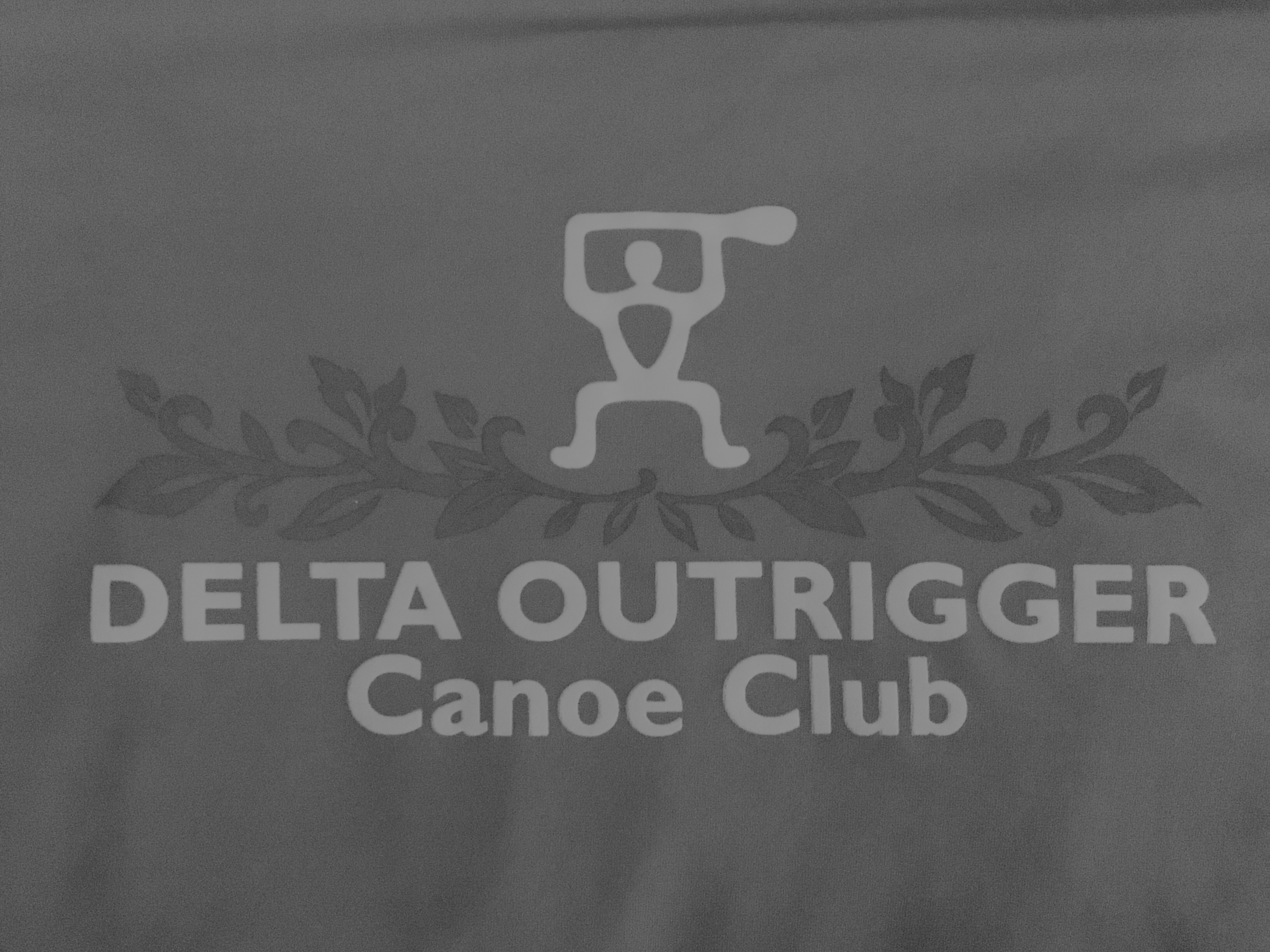Paddling from Deas Island can be an enjoyable time on the water as with all waterways there are areas more challenging than others. Our goal is to provide you with information to keep you safe as you venture out onto the Fraser River. Depending on the amount of time you will be spending on the water please keep weather, current and tidal conditions in mind. What you start out with may not be what you end up with. Areas at the mouth of the slough and between Kirkland and Gunn Islands can present very low tides and you may find yourself hitting bottom, rudders have been know to get stuck in the muddy bottom of the Fraser.
During freshet (spring time) the river current will be stronger than usual, and there may be considerable debris on the water, especially in Areas 2, 3 and 4. All crew members must be comfortable with the decision paddle in these areas.
(1) Deas Slough to the breakwater at the mouth.
Usually calm water, but wind, current and waves may be challenging. Other users include rowers, canoes and kayaks, skiers/wakeboarders. Along with weather conditions remember to check the User Group schedule
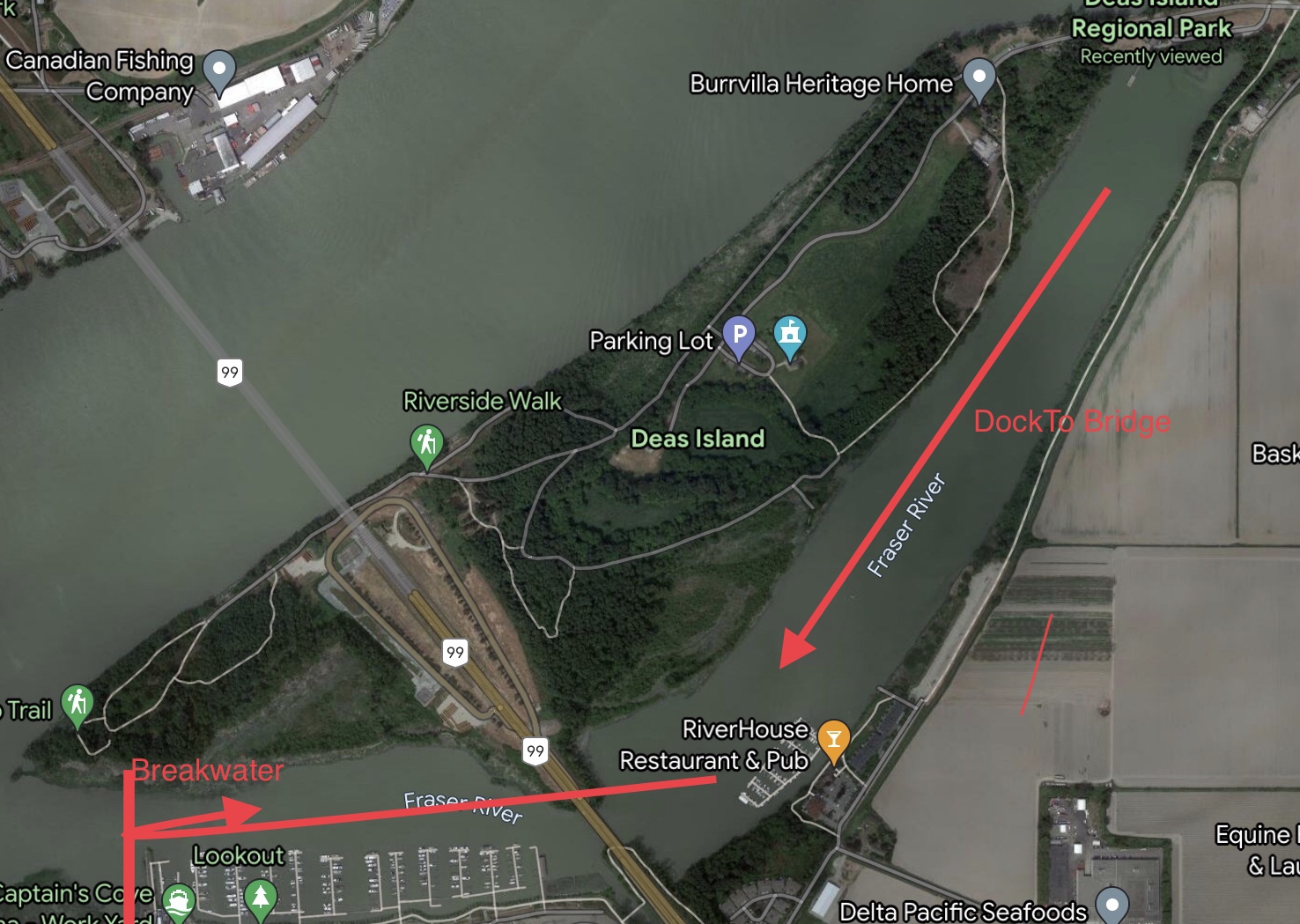 Deas Slough to Breakwater
Deas Slough to Breakwater
(2) Ladner Reach to the channel south of Kirkland I, to the end of Gunn Is.
Ladner Reach to Ladner, including the channels between Barber, Heart, and Little Heart Is.
More potential for rough water, stronger currents, other boat traffic is moving faster, generating bigger waves, often debris on water
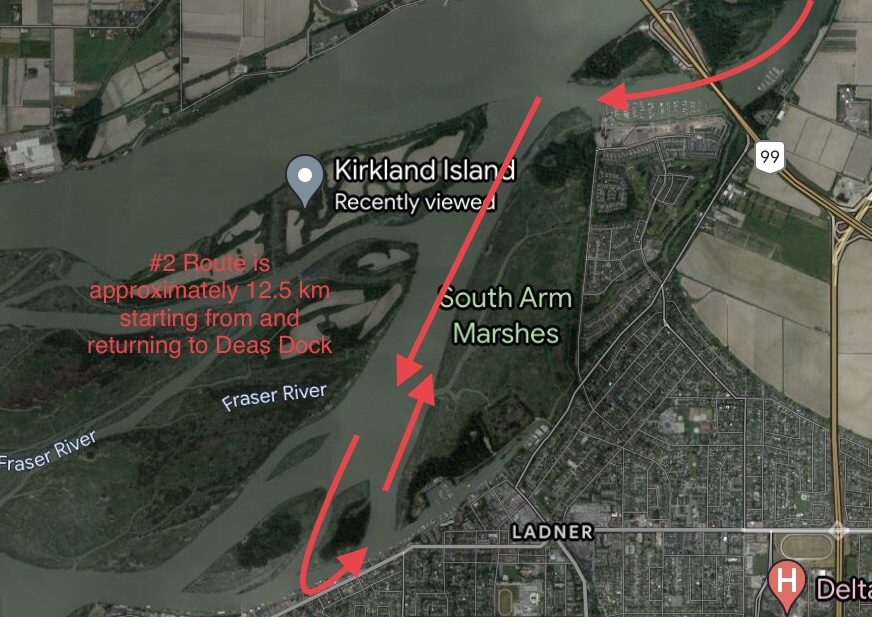
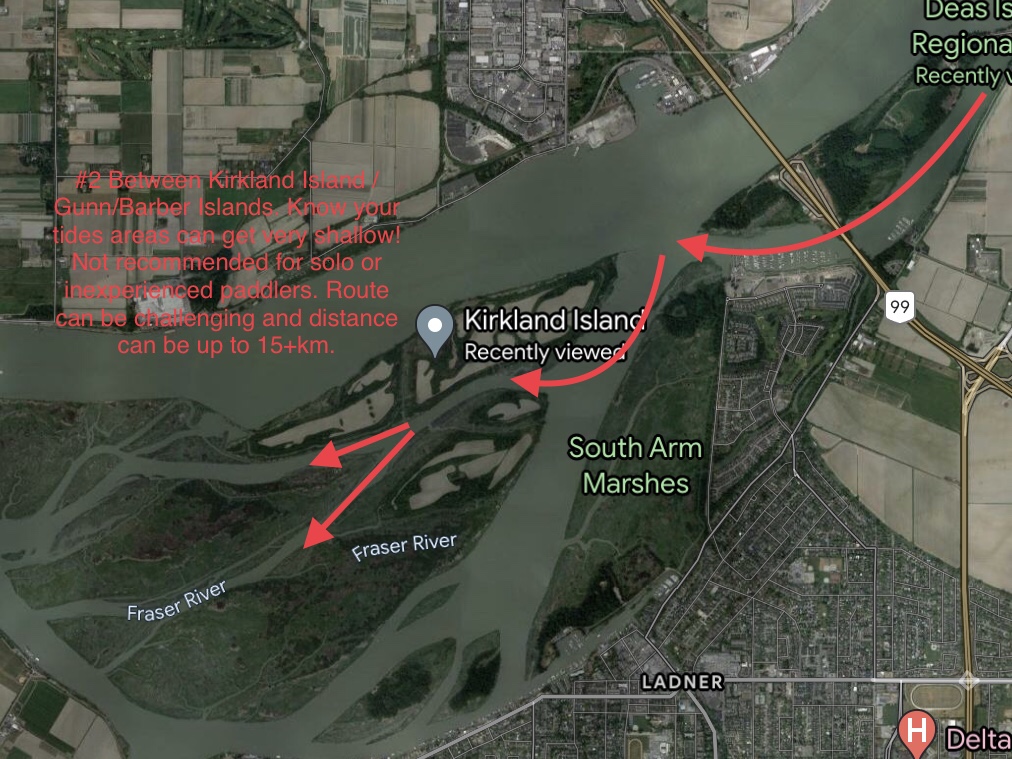
(3) Ladner Channel to Westham Island Bridge, via Gunn Is, Barber Is, or Heart Is channels.
Recommended for experienced paddlers only. Canoes should stay within 30m of shore at all times. Stronger river currents
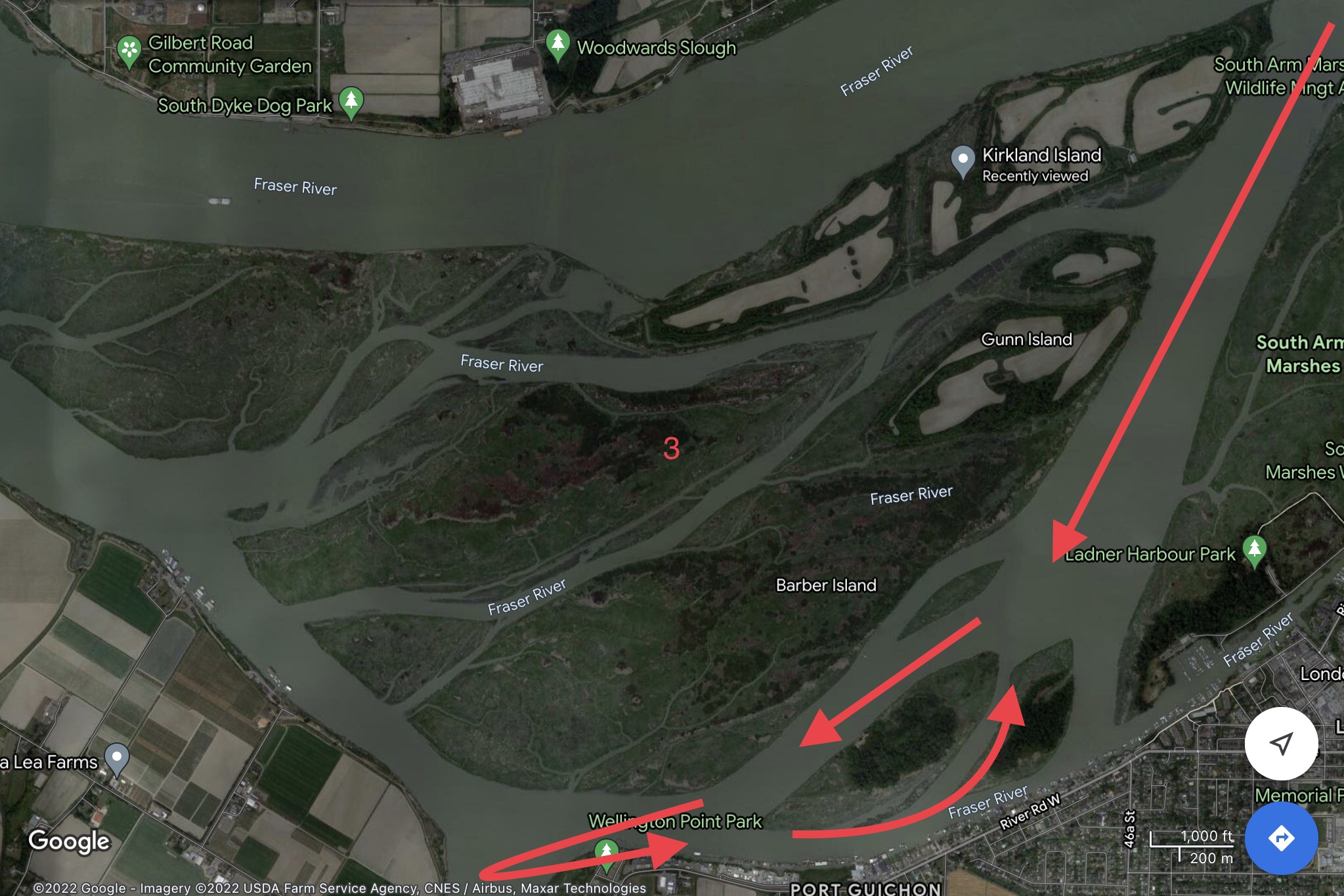
(4) Fraser River Main Channel upstream of the marker.
Recommended for experienced paddlers only; only during calm weather and with minimum other vessel traffic. Larger boats, including tugs and freighters generate very large waves. Always head upstream into the current, and return downstream with the current. Canoes should stay within 30m of shore at all times.
